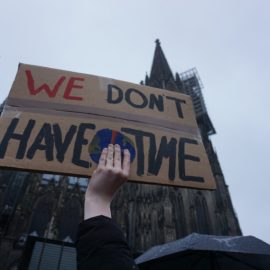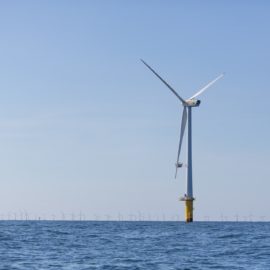
Both Louisiana and Florida get hit with hurricanes and Florida gets them on both sides. Yet our electrical grid is weaker.
Hurricane Ian hit Florida’s western shores with intensity and wind speeds similar to those packed by Hurricane Ida when it slammed into Louisiana last year. Also like Ida, Ian clobbered the state’s utilities, knocking out power to a swath of customers as it moved across the state. But Florida has spent years hardening its electric grid, investing billions into stronger poles, buried power lines and elevated substations. And while Ian had catastrophic effects, Florida’s grid stood up much better than Louisiana’s did last year. At its peak, Ian, which made landfall in a county with nearly twice as many people as Louisiana’s most populous parish, knocked out power to 2.7 million customers in Florida, representing 24% of the state. At Ida’s peak, just over 1 million customers were without power, representing 47% of Louisiana’s homes and businesses. Restoration, however, has moved much more quickly in Florida.
nola.com
By the 4th day, we were in North Carolina because there was no given date for repair, we still had three times the outages than Florida.
As of Friday, Florida Power & Light, the state’s dominant utility, said it had essentially completed restoration. Most of the remaining outages are from a small electric co-op that serves hard-hit Lee County. The differences are perhaps starkest in the places hardest hit by the storms. In Lee and Charlotte counties, which sit on the western coast and took the brunt of the storm, 20% or fewer customers remained without power by Friday. At the same point after Ida, almost no one had their power back in the hardest-hit areas of Louisiana – including the coastal communities of Terrebonne and Lafourche, and St. James, St. John the Baptist and St. Charles further inland. The poorer performance in Louisiana should not come as a surprise. Unlike Louisiana, Florida chose to overhaul its grid planning after taking a beating from hurricanes in the early 2000s, making several changes to rules and laws governing utilities. It also invested billions in storm hardening, costs billed to ratepayers.
How much money would Entergy have saved if the hardened the grid?
While not everyone in Florida is happy with the grid’s performance after Ian, the hardening efforts have been shown to be effective. A federal report after Hurricane Irma in 2017, which traveled the length of the state and knocked out power to far more people than Ian, found the state restored power faster than previous storms. It is still too early to say exactly how well storm-hardening investments performed during Ian, said Charles Rehwinkel, who serves as public counsel for Florida’s Public Service Commission, a state-sanctioned advocate for ratepayers. Louisiana does not have such a state-run consumer advocate, putting it in a small minority of states, according to the association representing them. At least 45 states have them. But Rehwinkel said the fact that transmission structures largely did not fail in Florida is likely attributable to investments made over the years to prepare for hurricanes. “Early reports were that the transmission grid for those three (investor-owned utilities) held up well,” he said. “It’s a little too early to tell whether the reason they held up was because of storm hardening. But I have a feeling that that may well prove to be the case.” He also noted there is a “lot of misery” not reflected in the numbers, because even once utilities restore power to hard-hit areas, many damaged homes still won’t be able to take power. Storm surge and 150 mph winds laid waste to coastal communities like Fort Myers.
Climate change is going to make the storms worse meaning hardening is needed.
Utilities and state and federal regulators have acknowledged that stronger hurricanes, fueled by climate change that is bringing warmer ocean temperatures, pose an ever-greater threat to the electric grids of coastal states. There is less agreement on how to fix the problem. Louisiana Public Service Commissioner Craig Greene, a Baton Rouge Republican, has opened several probes aimed at improving resilience by replacing electric poles and taking other measures. The PSC hired the Baton Rouge consulting firm CSRS to look at storm hardening, with a $330,000 budget. Greene said in a statement that Florida “sticks out as a success story” in storm hardening. Unlike Louisiana, he said, Florida recognized in 2005 that “we cannot keep doing the same thing and expecting different results.” He said improvements Florida has made have “saved customers hundreds of millions of dollars and significantly decreased the duration of power outages.” “What we hear from our utilities, though, is ‘infrastructure hardening costs a lot of money,’” Greene said. “Well, so does continuously asking Louisiana residents to pay for storm damages after they already pay utility bills that are supposed to go towards infrastructure improvements.”
Insanity is also making us pay for what should have been done.
Utilities pass storm recovery costs on to customers through a process called securitization that was passed after Katrina, meaning customers pay dollar-for-dollar restoration costs, instead of additional profits for the utilities. Customers pay for the costs over years through surcharges. Freese acknowledged Florida’s performance after Ian was superior. He said that owed in large part to the decision by Florida’s PSC to pursue grid hardening following the 2004-2005 hurricane seasons, and he expressed hope that a resilience plan that Louisiana is now developing will help Louisiana close the gap. “Similarly, Entergy Louisiana’s recently added transmission and distribution infrastructure constructed with resilient design standards also have proven beneficial during hurricanes Laura and Ida,” Freese said. “Entergy Louisiana is developing a similar comprehensive resilience plan that will seek to accelerate the hardening of our infrastructure to that higher standard at a pace that maintains affordable rates … We look forward to working with our Commission and other elected officials to accelerate this transformation and create a stronger Louisiana.” Spokesperson Jennifer Cahill said Cleco recently completed its largest-ever upgrade to harden its transmission system. She said it includes structures that can withstand hurricane-force winds of up to 130 mph.
The sad part is that it took an emergency, Ida, for the problem to be just discussed.
Logan Burke, executive director of the nonprofit Alliance for Affordable Energy, which advocates for ratepayers, said it took Hurricanes Laura and Ida to “even bring to the commission’s attention that this is something we need to deal with.” And she lamented the fact that little progress has occurred on some of the dockets opened to deal with the challenge. “What it says to me is that Florida has taken resilience and planning very seriously,” Burke said. “This is true in terms of their building codes; this is true in terms of their energy infrastructure. They are simply more prepared than we are. And that impacts lives.” Burke said she is encouraged by a multi-agency effort in Louisiana to land some of the billions of federal dollars earmarked for grid investments in the bipartisan infrastructure bill passed last year. Ted Kury, the director of energy studies for the Public Utility Research Center at the University of Florida, said in an email that it’s clear the investments Florida has made have improved restoration times. He said after the 2004-2005 storm season, Florida Power & Light restored only about 55% of their customer outages in two days. For Ian, it was just over 75%.
Yrs, the Infrastructure Bill that 1 senator and 1 representative from here voted on but the other 5 want to take credit.
Another tool Florida has is a coordinating group that serves as a “mutual assistance agreement” from municipal-owned utilities and co-ops to the larger investor-owned utilities. The pact allows utilities to more easily share resources, including manpower and equipment. Kury noted that every storm is different and that overall restoration numbers are cold comfort to people who remain without power. FP&L spokesperson Bryan Garner said the utility has hardened virtually all of its transmission structures with steel or concrete and didn’t lose any of them during Ian. He said the utility had “limited wire issues” with debris hitting lines, but the company was able to energize most impacted lines within a day or two of the storm. Entergy reported in regulatory filings this year that 250 of its transmission structures were destroyed during Ida and another 280 were damaged. The company also said more than 1,900 transmission structures were destroyed or damaged during Hurricane Laura a year earlier. Still, Entergy concluded its transmission system “withstood the storm well” during Ida, because relatively few of the company’s newly built structures were destroyed. J.R. Kelly, the former public counsel for Florida’s electric regulator, noted the state passed a law several years ago that effectively made it easier for utilities to get storm hardening costs approved. “Yes, utilities are doing a good job,” he said. “But they should do a damn good job because they’re getting all their money up front.”
Hardening is need but it does cost money. How much, though, is spent fixing the problem after a storm?



